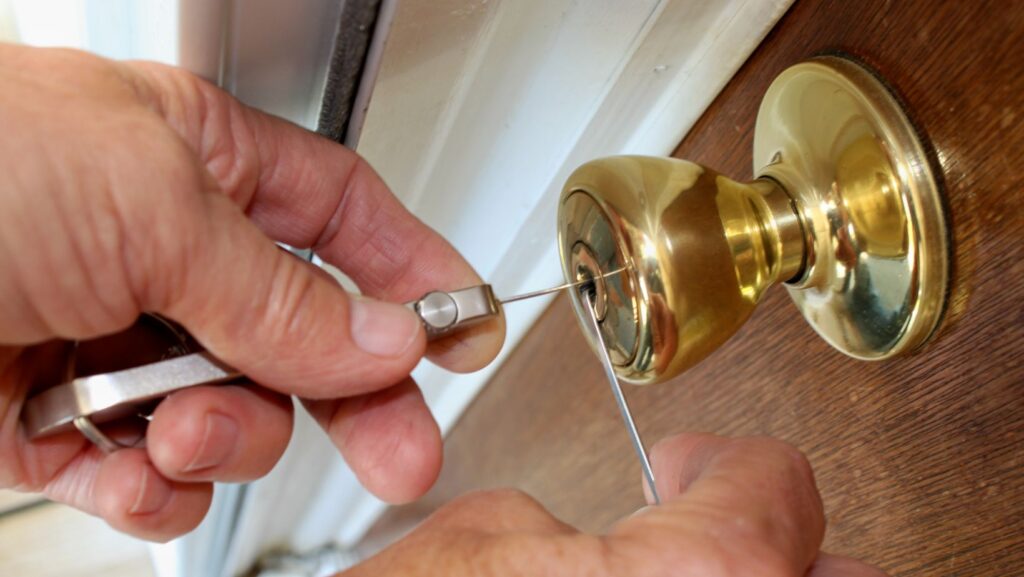Lock picking is a skill that fascinates many, from hobbyists to professional locksmiths. This guide delves into the various techniques used in lock picking and the ethical considerations that accompany this practice. Understanding these aspects is crucial for anyone involved in the field of locksmithing or security.
Contents
Table of Contents
ToggleUnderstanding Lock Picking
Lock picking involves manipulating the components of a mechanical lock without the original key to open the lock. This skill requires an understanding of the lock mechanism and a steady hand. It’s primarily used by locksmiths to help individuals gain entry to their properties or vehicles when keys are lost or unavailable.
Basic Techniques of Lock Picking
- Single Pin Picking (SPP): This is the most precise and basic method of picking a lock. It involves moving each pin to the shear line individually using a tool called a pick.
- Raking: Raking involves inserting a rake-like tool into the lock and quickly moving it in and out to set multiple pins at the shear line at once. It’s less precise but faster than SPP.
- Bumping: Lock bumping uses a specially cut key, known as a bump key, which, when inserted into the lock and tapped, forces the pins to jump to their shear line temporarily.
- Impressioning: This technique allows the locksmith to create a working key for the lock without disassembling it. By inserting a blank key and manipulating it, marks are made where the pins press against it, indicating how the key needs to be cut.
Ethical Considerations and Legalities
The ethics of lock picking are critical. It is a skill that should only be used legally and ethically by individuals who have explicit permission to open the lock in question. Unauthorized lock picking is illegal and can be considered breaking and entering. Always ensure that lock-picking activities are conducted in a legal and morally acceptable manner.
Security and Vulnerability
A profound understanding of lock picking also underlines the importance of using high-security locks to protect against unauthorized entries.

For instance, owners of Schlage locks might consider consulting a rekeying guide for schlage to understand how to rekey their locks effectively, enhancing security.
As highlighted by The New York Times, the art of lock picking has also become a popular hobby among those fascinated by puzzle-solving and mechanics, leading to discussions about the security flaws in common lock designs.
Advances in Lock Technology
According to BBC News, advances in technology have introduced more sophisticated locking mechanisms, such as biometric systems and smart locks, which offer more security than traditional mechanical locks.

These advancements challenge lock pickers to develop new skills and tools to keep up with evolving security technologies.
Conclusion
Lock picking is a valuable skill for locksmiths and security professionals. It requires an ethical approach and legal boundaries to ensure that it is practiced responsibly. By understanding and respecting the legal implications and ethical boundaries of lock picking, enthusiasts and professionals alike can explore this fascinating skill safely and legally. Always aim to enhance security, protect privacy, and uphold the law in all lock-picking activities.

